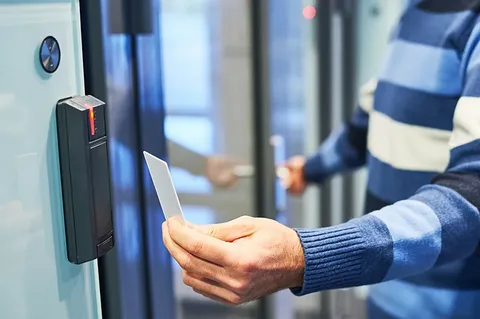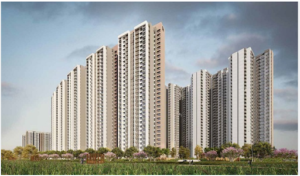In an increasingly interconnected world, organizations must balance opening their doors to visitors and maintaining their safety and security. To achieve this balance, a robust visitor management solution is key. This tool streamlines the process of tracking and controlling visitor access, making it a vital tool that can be used in corporate offices, healthcare facilities, and more. Some key factors to consider before implementing an effective visitor management system are as follows.
Understanding visitor management solutions
Visitor management solutions are configurable software systems that are used to automate, integrate, and centrally manage the check and monitoring of visitors in different environments. They provide the ultimate experience for visitors while enabling organizations to maintain very high levels of security. Automating the check-in process also gets rid of cumbersome paper logs and drastically reduces the risk of human error by increasing accuracy. By implementing a good visitor management solution, organizations can observe their visitor patterns and behaviors and collect data, which in turn improves efficiency. This is invaluable information for management teams to inform future security policies and operational improvements. Numerous solutions also provide customizable reporting capabilities, which allow organizations to analyze trends over time and adjust strategies as needed. These solutions feature integration with other security systems, creating a total solution as well as helping make a safer and more welcoming environment for everyone involved.
Key features of visitor management systems
Organizations should evaluate visitor management solutions based on a range of features that both improve the user experience and security. It has pre-registration capability, real-time visitor tracking, and visitor access control. By pre-registering, hosts can send out invitations ahead of time and collect information as needed, this reduces wait times and simplifies the check-in process. Knowing who is on-site at any point during the day or at any time if need be, systems of real-time tracking serve as an invaluable tool in emergency response and allow for greater safety. This is especially true in the case of visitor access control, which defines where visitors are allowed to go within the premises and thus keeps restricted areas secure. These may include customizable visitor badges, reporting tools and integration with existing security systems. Taken together, these features form a unified experience that simultaneously streamlines security and improves the visitor experience, both as efficient as it is user-friendly. This can make visitors and staff feel more satisfied and safer.
Importance of visitor access control
A critical part of any visitor management solution is visitor access control. It defines conditions on who can enter certain areas within an organisation. This aspect of visitor management is especially important in sensitive environments like healthcare facilities, education institutions and corporate offices. Visitor access control is effective in minimising the risk of unauthorised access to both personnel and assets. Forcing access restrictions can be implemented via various strategies, such as issuing temporary badges and the use of biometric scanners and mobile credentials. Additionally, real-time monitoring can integrate security, tracking the movements of visitors and alerting staff to any anomalies. Organisations that prioritise access control can significantly reduce the risk of security while creating a safer environment for all. Additionally, having a strong access control system helps promote accountability in the form of who accessed what areas and when, giving us data for security audits as well as investigations into incidents. The stronger the security, the better.
Integration with existing systems
A visitor management solution must work natively with security and operational systems to be truly effective. This involves synchronisation with surveillance cameras, alarm systems, and employee access controls. This provides for an overall holistic view of security where data flows easily within systems, allowing organisations to respond to incidents quickly and improve overall situational awareness. It also helps in avoiding operational silos, as everyone is aware of what’s happening and coordinated. To achieve optimal efficiency and safety, organisations must review the compatibility of their current systems when choosing a visitor management solution. It might require analysing API capabilities or understanding whether pre-built integrations exist. Moreover, user-friendly interfaces and training resources can help make the adoption of the system by staff smooth. An integrated visitor management solution ultimately not only adds to security through a stronger solution but optimises operational workflows to improve visitor experiences while providing greater organisational resilience.
Compliance and data security
In today’s data-driven world, compliance and data security should not be overlooked. Visitor management solutions handle such sensitive information as personal identification and visit logs. This means that the organisations need to check that the solution they have chosen meets the relevant regulations, for example, GDPR or HIPAA. What is more, emphasis should also be placed on data security measures. Visitors’ data must be encrypted, stored securely, and accessed by employees according to specific policies. Additionally, organisations should conduct regular audits and employee training to continuously reinforce security protocols and ensure continued compliance. Organisations that prioritise compliance and data security enhance their protection from legal liabilities while demonstrating trustworthiness to their visitors. Additionally, transparent data handling practices can increase visitor confidence and satisfaction. In the end, a complete visitor management solution not only streamlines operations but also serves as an integral defence against data breaches and third-party infractions, a factor in keeping the environment both for the organisation and visitors as safe as possible.
Conclusion: Enhancing security and experience
A good visitor management solution that places a strong emphasis on visitor access control can do wonders for security and visitor experience. It will also have to address several factors, including the features, integration with current systems, and data security that has to be ensured while managing visitors. Pre-registration, real-time tracking and customised visitor badges can make the check-in process easier and enhance security. Organisations must carefully select and choose to implement an efficient visitor management solution that streamlines the process and aims to prioritise safety without hampering hospitality. Also, visitor management can be integrated with existing security systems for increased safety. First impressions continue to matter in a world, and a well-managed visitor experience can lead to positive relationships that last, creating a welcoming environment that reflects both the organisation’s values and the importance of its visitors.











+ There are no comments
Add yours